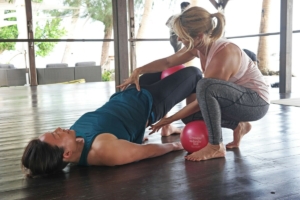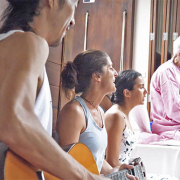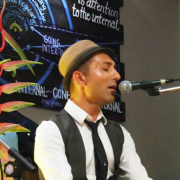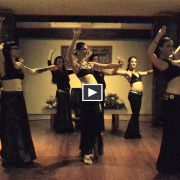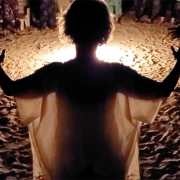 https://samahitaretreat.com/wp-content/uploads/2019/11/Beach-Fire-with-Daphne-Tse-and-Matthew-Cohen.jpg
491
1000
Daniel Stringer
http://samahitaretreat.com/wp-content/uploads/2024/01/samahita-logo-v2.svg
Daniel Stringer2019-11-26 00:00:002024-02-15 09:32:52Beach Fire with Daphne Tse and Matthew Cohen
https://samahitaretreat.com/wp-content/uploads/2019/11/Beach-Fire-with-Daphne-Tse-and-Matthew-Cohen.jpg
491
1000
Daniel Stringer
http://samahitaretreat.com/wp-content/uploads/2024/01/samahita-logo-v2.svg
Daniel Stringer2019-11-26 00:00:002024-02-15 09:32:52Beach Fire with Daphne Tse and Matthew CohenIs Yoga Enough for Physical Activity?
Is yoga enough for physical activity?YesI was going to stop there and make it a really short newsletter but then I realized you might need some more insight. Plus, it’s not a simple “yes” and could easily be a “no”. I am also aware that there are multiple viewpoints and opinions on this very subject: how to workout?You could spend the next month online researching this topic of physical activity. But would you know what to do, when, how and why? What does it take to have a clear and effective approach to physical activity (PA) that works for you?Personally, I didn’t just spend a month but rather over 20 years to get at that question. It began with physical yoga, dynamic movement, to an intense level of advanced ashtanga, complimented by restorative āsana, to research on, and practice of several training modalities, especially interval training that involves both resistance, strength training and cardio on the bike.I recently heard Jane Fonda at 85 saying how she was so happy she had muscles from her earlier years of workout as it totally affects her life quality now. And Paul McCartney when asked how he is so fit (at 80) said he finishes his short 10-minute workout with a headstand. Him and his mates (a bunch of famous people) call themselves the “yoga boys.” Oh yeah.Yoga, as understood across its millennia of teaching and practice, is about the cultivation of mental balance, a clear psychological state, and emotional regulation. Physical yoga practices developed over time to directly support the mental, with an understanding of how the physiological affects the state of mind. When combined with specific breath control and inner-directed focus yoga achieves an incredible feat of physical-emotional-mental wellbeing.I am still in awe of the power of these yoga techniques after all these years. They remain part of my daily routine. All that’s changed for me as time has gone on is adapting āsana to best support the body. Adding to that some interval resistance strength and core training and cardio on the bike.Previously, I trained to a very advanced level in yoga āsana which required calisthenic precision and a level of fitness, endurance, and strength similar to what would be needed in any competitive sport. However, āsana does not need to go to this level.For some of us āsana as basic physical yoga is already a challenge purely based on the nature of different poses. For others it becomes an optimal neuromuscular conditioning, similar to the classical texts teaching of a supported, smooth and composed approach. This is both āsana’s own signature as well as delivering its own unique physical benefit that no workout could give. But even this requires some investment of physical effort, sometimes difficult.In other words, āsana is a unique form of physical activity with its own unique benefits that can easily be bypassed by making āsana more of a workout.Yoga as physical activity (PA) is something I focused on in my own scholarly research. It is part of the yoga process. It is essential. It just comes down to knowing what or how much is PA for yoga versus achieving other forms of PA in other modalities. If you know and understand the difference between each approach to physical activity you can benefit from both by having them in your routine. Unfortunately, in practice the distinction blurs so often a research study on “yoga” was really one on a mild workout as opposed to a comprehensive yoga method.Working out as a different level of physical activity to yoga PA is of tremendous value, far more studied in our modern scientific way than anything on yoga, especially in the last decade on high intensity training (HIT) and its interval form (HIIT). Actually, interval forms like this have been around since the early 1900s. But the recent rise in popularity is because, one, the research has given it a boost, especially as it is focused for athletes, and two, everyone is trying to figure out how to manage their time. Oh yes, life is tricky!I have found the HIT approach of shorter intense strength and resistance workouts and cardio blasts gave benefits without exhausting me and, best of all, in a very short amount of time (10-25 minutes). Of course, one can go on a long run or bike ride, adding endurance activity to the mix. Which might be a nice weekend morning activity. But for the rest of it, the question becomes how to get the most out of time and effort?If you look up research on exercise you will find it classified into low, moderate, and high intensity forms. Yoga PA is low to moderate intensity. If yoga is to deliver its physical benefits as stated in its teachings, and aid towards the inner and psychological process, then this is important.At the same time, as human beings, especially in a world where we do less to zero heavy manual work, like we used to do on farms or outdoor work, we also need some high intensity and strength training workouts. A lot of the latest research on some of these activities states “intensity trumps duration” and highlights the health-promoting value of HIIT and similar interval activity.You can develop your “core” in a yoga practice but most everyone needs additional core exercises to stabilize and strengthen it. To do that effectively and time efficiently, a 3-5 minute routine can be practiced. Daily. You just need to learn what to do. Then do it.I do 4 minutes of this every morning. Just before my yoga āsana. And even though adding other PA into my routine, I still maintain that yoga āsana is one of the best activities to condition the neuromuscular tissue, i.e. your body! Keep the added resistance strength training, intense activity, HIIT style, or cardio blasts as their own activity, often best later in the day, though for some morning or midday works better.Yoga PA, āsanas and related, can be complemented with other PA workouts. The golden guideline, which Sw. Kuvalayananda instructed back in 1924 (99 years of this!) was to keep the two separate in time. If doing them close together then let there be a 10-15 minute rest period, which a nice savasana (laying on your back) delivers.Personally, I commit to yoga PA, meaning āsanas, plus core work, every day, 365! And the other PA, workout higher intensity style, in a short duration time commitment 4 to 6 days a week.The most common issue for most people is “I don’t have enough time.” Yet I see people have time to scroll on the phone, read unnecessary things that pop up on the screen, spend time with the mind wandering or worrying on things that aren’t even real, or more time chit-chatting than is necessary (yes, we all need a bit!).It’s all about how you want to use your time. First, learn what to do, then you can do it in a timely manner, enjoy it, and keep at it. Second, you need it, it is essential, and you can design it to fit your lifestyle and time needs.This was the base of reasoning to develop a combined yoga PA (including breath and sitting-meditative practice) and other PA workouts at Samahita back in 2015. The name that arose for that combo of Yoga & Fitness was, and still is, Yoga Core Cycle. Because that’s what we do.You may still ask “but when can I do it all?” Once learned, started, and seeing it as valuable for you, you find the time.The toughest part is getting it started. But that is where we help. Samahita was set up to help people learn and practice and bring all these activities into their lives. Your life.My experience has been that though I need to make time to do these things it makes the rest of my time use in the day more effective and efficient. And I have business, scholarly, and parental duties. So, it is possible. By making time, I save time.Start with one thing. Build it from there.Come join us at Samahita and we’ll help.
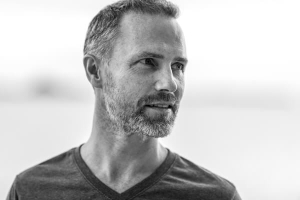
Paul Dallaghan’s expertise with breathwork, body and meditative practices comes from three sources: over 25 years of daily dedicated practice and teaching these techniques; immersion in the original culture through one-on-one direct training in practice and study of ancient texts; doctoral scientific research at a leading US university (Emory) on yoga and breath in terms of stress, health and aging. Paul occupies a unique space to impart genuine teaching and science on these practices, acknowledged by his teacher and lineage (Kuvalayananda) in India as a Teacher-of-teachers and a Master of Breath, identified to carry the tradition (Pranayama). This places him as the only master-level yoga and breath practitioner currently immersed in scientific academic research on breathwork, stress and health. His sincere and ongoing role is to teach, write and research to help put out experienced and authentic information on these areas in a world full of confusion and conflicting messages both off and online.
For more on his background see his bio.
More from the Samahita Blog
